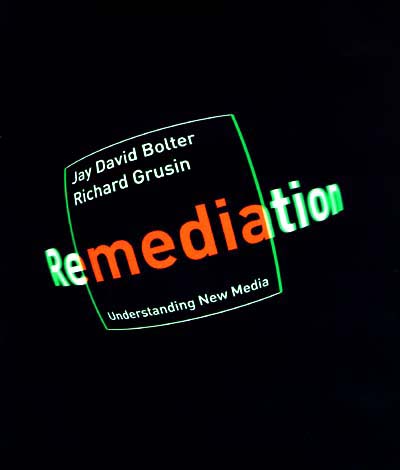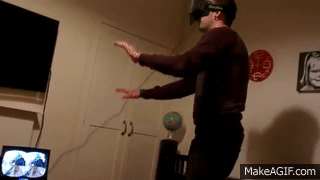The purpose of Virtual Reality as a medium is to disappear
Virtual Reality is the most immersive medium we have ever known. It might even come close to total immersion, a state in which the medium itself it totally invisible. The purpose of VR is to disappear. The viewer is to forget she is even wearing a headset and is to accept the reality she emerges in as her new one. This state of total immersion is called transparent immediacy, a concept that was introduced by Jay David Bolter and Richard Grusin. I have their book on my shelf and it has become one of the most important books to help me in analysing Virtual Reality.

VR is closer to reaching transparent immediacy than any other medium before it, but we are not quite there yet. Put on a headset right now and you are still aware of the medium. You will experience a delay or notice the pixels. You will feel the headset on your head and maybe the chair you are still holding on to. Your height might not be accurate and if you try to move, the world you are in might not recognise it. You may run into a limit on how far you can walk, or you just walk right into a wall in real life.

Hitting a wall while in VR might take you out of the immersive state
These are all signs of a state in which the medium emphasises itself, called hypermediacy (also a term introduced by Bolter and Grusin). It is the contrary of transparent immediacy.
VR isn’t new. It originated in the 60’s and in the 90’s it seemed to finally reach the public. It then looked something like this:
So why didn’t it catch on? Back then, VR never got the attention that it is now about to get. Not only because of the price, but mostly because hypermediacy was simply too strong. For one thing, it made people sick. I have experienced some motion sickness in VR with the technology we have now, so I can’t even begin to imagine how strong it must have been back then. Not just motion sickness (caused by delay) was stronger, but the graphics were very limiting too.
Also, feeling the weight of the headset was much more of a problem in those days. All together, for a medium that is supposed to make itself disappear, its own being just drew too much attention.

Putting a headset on in 1991
So we’ve come a long way conquering hypermediacy, but we haven’t yet reached transparent immediacy. Will we ever? I wonder. It would mean not being able to tell the difference between reality and virtual reality, like on the Star Trek holodeck. Or maybe even like in the Matrix, where people literally don’t know the difference between the real and the virtual world.
Reaching transparent immediacy
Everywhere in the world, people are working on getting VR closer and closer to being transparent immediate. Take for instance the Lytro light field VR camera. This is just pure magic. What it does is making it possible for you to move your point of view in a cinematic environment. A big step towards transparent immediacy. Before, this technology movement was only possible in a computer generated environment.
Something else that is being worked on is making those pixels invisible.The HTC vive already does quite well on this in comparison to others and it can only get better from there. Reducing visual delay is also just a matter of time. A trickier part might be to create an environment where you can walk around without feeling restricted in any way. Yet it can be taken care of, by making you walk in circles.
I think a harder thing to accomplish will be to make yourself visible in the virtual space and actually believing this person is you. Looking down on your body without seeing your own clothes and not seeing the subtle movements that you’re making will be difficult to fix. Not to mention interacting with other people or artificial intelligence and making that feel real.
If we reach all those goals and get to a point where we can really call the medium transparent immediate, then what? We are all working on it but is it something we even want to reach? Isn’t it frightening not being able to see the difference between reality and virtual reality? And what do we do with the hypermedial elements that do bother us? Until they are fixed, how should we deal with them? That I will tell you in my next blog, which will also get back on the subject of my last blog: how to make a story relevant to Virtual Reality. See you in two weeks!